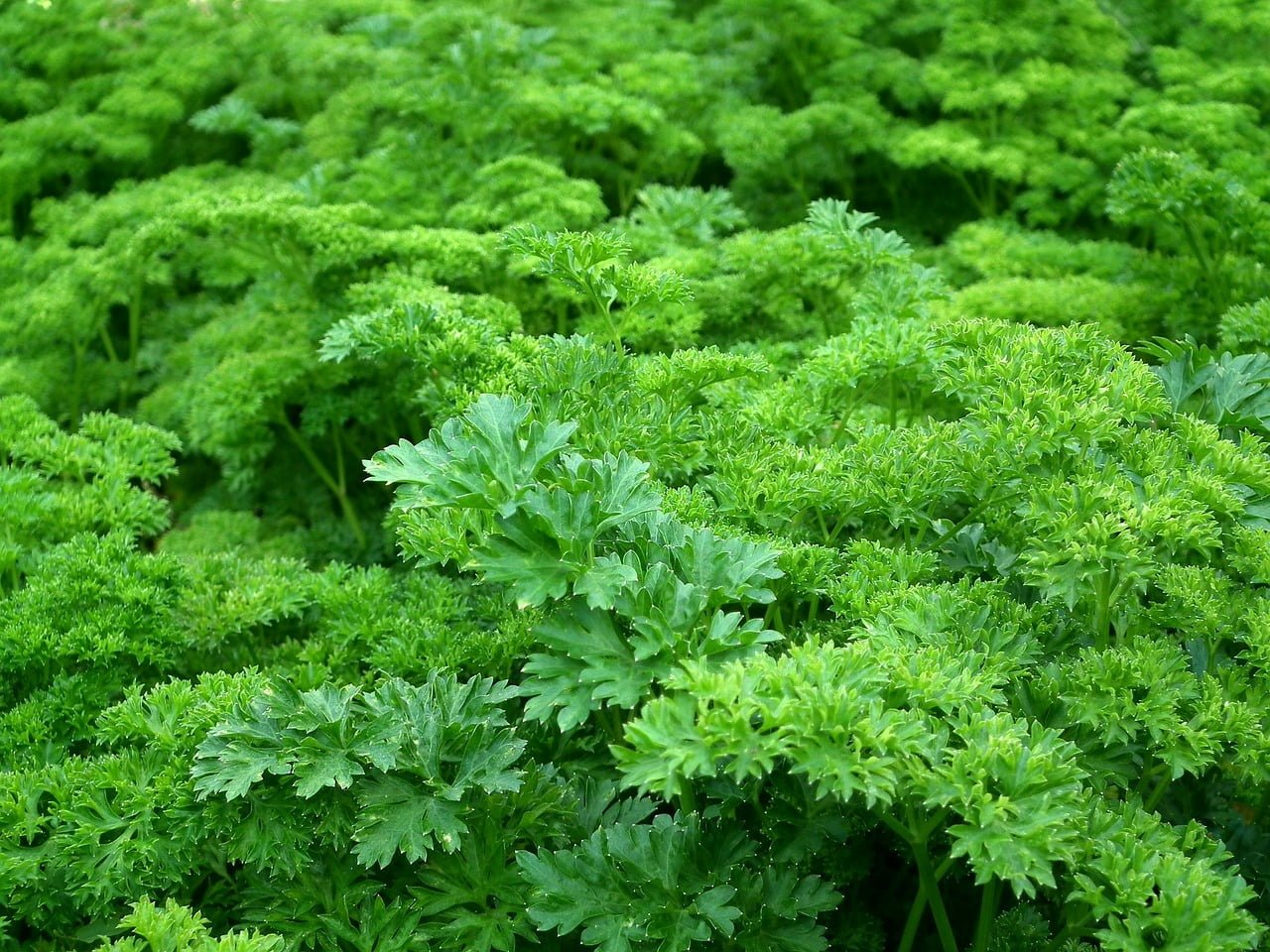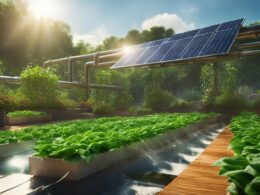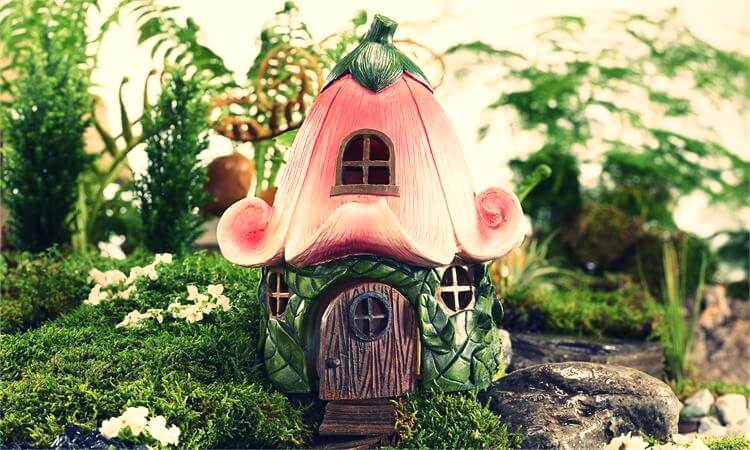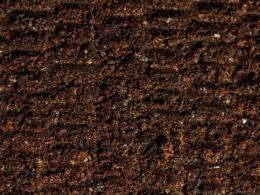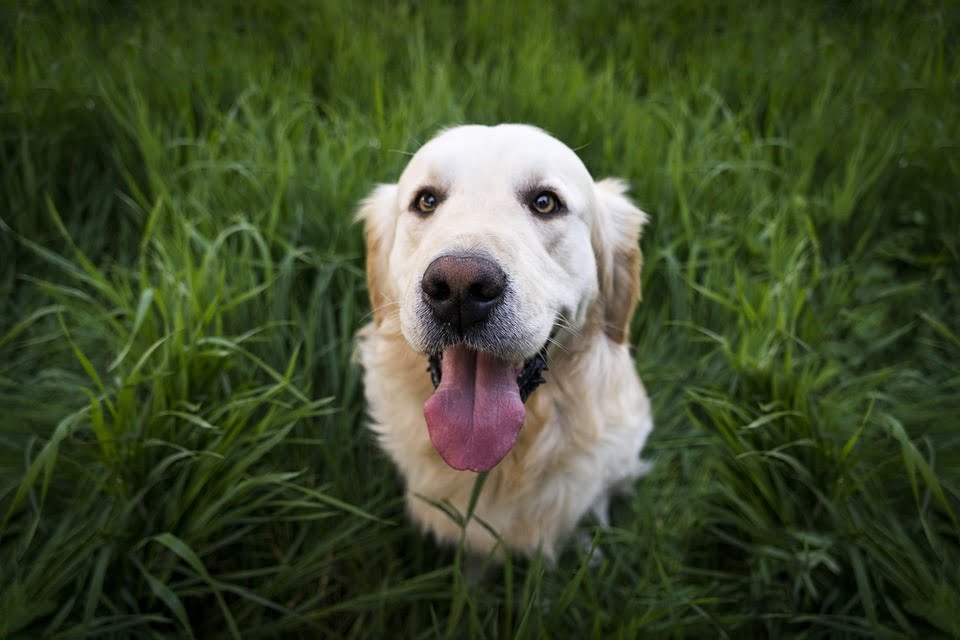Parsley, a herb that originated in Europe, is a well-known herb that is commonly used in sauces, salads, and soups. It has a mildly bitter taste, which means it balances the savory taste in dishes. Not only does parsley look nice, but the parsley herb is also very healthy for you. There is twice as much iron in parsley as there is in spinach, and it is high in vitamins K and A. Because parsley is such a healthy herb, you may want to consider growing it in your garden. If so, you have come to the right place. Today, let’s take a look at how to grow parsley, both outdoors and indoors. Growing parsley is very easy, and the result is that you’ll have plenty of parsley to cook with.
How to Grow Parsley Outdoors

How to Plant Parsley
The first step to growing parsley is planting it. For a head start, plant the parsley seeds in individual pots indoors 10 to 12 weeks before the last spring frost. For better germination, you can soak the seeds overnight. Soaking parsley seeds is not necessary though. You also don’t have to give your parsley a head start if you don’t want to. Parsley is actually very hardy and will continue growing even if there is snow. Starting parsley seeds indoors is only necessary if you are wanting your parsley to grow earlier in the year. This means that you can plant the seeds directly into the ground if you want to. After the last frost, plant the seeds in moist, rich soil about 6 to 8 inches apart. For thinner plants, plant about 6 to 10 inches apart. Try to plant them in a weed-free area so that you can see when the parsley sprouts. It can take up to 3 weeks for the plants to sprout. If possible, try to plant parsley near asparagus, corn, and tomatoes in your garden. These vegetables make great parsley companion plants.
Watering Parsley
Although it is important to water your parsley plant, parsley is drought-tolerant. This means that if you forget to water it or if it is an extra hot day, the parsley will live. Don’t over-water it, but try to keep the soil moist. Moist soil is especially important when you first plant the seeds.
Treating For Pests
Just like all plants, parsley is vulnerable to pests. However, some insects that live on parsley do not actually hurt the plant. Parsley is a favorite food of the brightly striped parsley worm caterpillar, which becomes the black swallowtail butterfly. While parsley worms may eat a lot of the plant, they won’t kill it. Many gardeners plant enough parsley for themselves and these caterpillars since black swallowtail butterflies are endangered. That said, you must watch out for other serious pests such as the whitefly. To get rid of the whitefly, spray the undersides of the leaves thoroughly with insecticidal soap.
Not only do pests harm parsley, but a few diseases can damage your parsley plant as well. Parsley turning yellow is a sign of either leaf spot fungus, blight, crown or root rot, Stemphylium fungus, or Septoria leaf spot. Most of these diseases can be treated with fungicide, although for some of them the treatment is to simply water the parsley in the morning instead of later in the day.
How to Harvest Parsley
Many people wonder when to harvest parsley. Telling when parsley is ready to be harvested is actually very easy. When the leaf stems have three segments, parsley is ready to be harvested. To harvest your parsley, cut the leaves from the outer portions of the plant. Leave the inner portions of your parsley plant so that it can continue to mature. You can either eat your parsley right away, or you can store it. One method of storing the parsley fresh is to put the leaf stalks in water and keep them in the refrigerator. Another method of storage is drying the parsley. To dry parsley, cut the parsley at the base and hang it in a well-ventilated, shady, and warm place. Once it’s completely dry, crumble it up and store it in an airtight container. If you want fresh parsley throughout the winter, regrow parsley in a pot and keep it in a sunny window.
Are Angora Rabbits Safe to Keep in a Garden with Parsley?
Raising an angora rabbit tips: Angora rabbits generally enjoy munching on fresh herbs like parsley, making them a great addition to gardens. However, it’s crucial to ensure the parsley is free from pesticides or chemicals that may pose a risk to the rabbits’ health. With proper supervision and a safe, pesticide-free environment, keeping Angora rabbits in a garden with parsley can be a wonderful experience.
How to Grow Parsley Indoors

Prepare the Pots
Although growing parsley outdoors is easy, it may be fun to grow this herb indoors. Unlike growing parsley outdoors, when you grow parsley indoors there is no rule for when to plant parsley. All that matters is that your parsley plant gets plenty of light from either a window or artificial light. Planting parsley seeds indoors is very easy to do. Before you begin growing parsley in pots, you’ll need to prepare the area for the parsley. To begin, gather your pots and fill them with soil. Choose soil that is well-drained. Then mix 1 part perlite with 2 parts coir compost. Also, add 20% worm castings. Use a soil tester to find out the pH of the soil. If it’s acidic, add 1 gram of hydrated lime to every liter of soil. Lastly, use 1 tablespoon of kelp meal for each gallon of soil.
Plant the Parsley
Once the pH of the soil is right, place your parsley seeds in the pots. Growing parsley from seed in containers is very similar to growing parsley outdoors. The parsley spacing is the same as growing parsley outdoors, which would be to plant the parsley 6 to 8 inches apart. If your pot is not this large, only plant one seed per container.
Water Your Parsley Plant
For your indoor parsley, it is recommended to water it 2 to 3 times per week. Make sure the pots have holes on the bottom so that it can drain. If you place your finger in the pot and the first two inches are dry, this is a sign that your parsley bush needs to be watered.
Feed the Parsley After 10 Days
After 10 days go by, you will need to start feeding it. Every two weeks, you will need to nourish the soil. To do this, use a half-strength nutrient (for example, Maxsea 16-16-16). Occasionally, you may also want to give a boost to your parsley. Try to add 10 ml of B1 plant mix, as well as liquid seaweed, in every gallon of water you are giving to the plants. The B1 brings hormones and vitamins, while the seaweed offers the plants growth hormones and trace nutrients.
Harvest Your Parsley
Similar to an outdoor garden, as soon as your parsley plant has three segments on the stem you can harvest it. Cut the leaves from the outer portions of the plant and leave the inner portions of your parsley plant so that it can continue to mature. Let your parsley continue to grow until it goes to seed, and then you can plant some more parsley in your pots.
Is Parsley a Perennial?
A common question that many people wonder is this: Is parsley a perennial or is parsley an annual? Annual plants live for one growing season and then die, while perennials regrow every spring. Parsley, on the other hand, is something completely different. It is a biennial, which means it grows for two years. During its first year, parsley offers delicious leaves. During the second year it goes to seed, and then it develops a taproot. Once the parsley goes to seed, it is done growing. However, you can finish eating the leaves on the parsley and you can also eat the taproot. It has been said that the root is the most delicious part of the plant, so don’t forget to eat it.

Final Thoughts on Growing Parsley
Growing parsley is very easy. Some gardeners plant their parsley seeds indoors for a head start, but you can plant your seeds directly into the soil if desired. Try planting it after the last frost, even though parsley is very hardy in cold weather. Space the seeds about 6 to 8 inches apart. Just like any other plants, you’ll need to water parsley and watch out for pests. One insect that eats the leaves of parsley is the parsley worm caterpillar, which becomes the black swallowtail butterfly. Although it will eat the leaves, it doesn’t actually damage the plant. Because this insect is endangered, most people let it eat the parsley since it does not harm the plant. For other insects though, use insecticide to get rid of harmful pests. On fungus diseases, use a fungicide.
Once the leaf stems have three segments, it is time to harvest it. You can either eat the parsley fresh or preserve it by drying it or storing it in the refrigerator. As for growing parsley indoors, make sure your parsley gets plenty of sunlight and once in a while, you give it a boost. In this article, I also went over the common question “Is parsley an annual or perennial?” Parsley is actually not an annual nor a perennial but instead is a biennial. This means that it grows for two years, and then it goes to seed and develops a taproot. The taproot is actually edible and is considered the best part of the plant. I hope this article has helped you understand how to grow parsley. There are so many recipes that you can use this herb for. Enjoy eating your own homegrown parsley this year!





